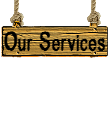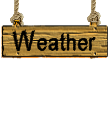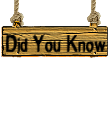Recognizing Potential Hazardous Tree Situations
More Stuff To Know
Do You Know What Tree That Is? | PDF
Do you know the types of trees you have? See if this helps you identify some of the most common trees in Tennessee and the southern states.
Fast Growing Trees | PDF
Looking for that perfect tree but dont want to wait forever having to worry about its small size? Although trees are slow growing plants in general, here are some of the faster growers.
Recognizing Hazardous Trees | PDF
Do you know how to spot a dangerous tree? This article will help you spot potential hazards before they happen.
Hiring A Tree Service | About.com
An article by David Beaulieu
A few things to consider when choosing and/or hiring a tree service for your trees.
When You Need An Arborist | About.com Another David Beaulieu article
What is the difference? How to know what type of service you need and where/what to look for.
Now Accepting All Forms of Payment
Learn How to Spot the Danger Before it's Too Late
Trees add to our enjoyment of outdoor experiences whether in forests, parks, or urban landscapes. Too often, however, we are unaware of the risks associated with defective trees, which can cause personal injury and property damage. Recognizing hazardous trees and taking proper corrective actions can protect property and even save lives.
A “hazard tree” is a tree with structural defects likely to cause failure of all or part of the tree, which could strike a “target.” A target can be a vehicle, building, or a place where people gather such as a park bench, picnic table, street, or backyard.
This page was created to help homeowners recognize hazardous defects in trees and to suggest possible corrective actions. We recommend that corrective actions be evaluated by a professional before attempting them yourself, especially when dealing with hazardous or dangerous situations.
Because of the natural variability of trees, the severity of their defects, and the different sites upon which they grow, evaluating trees for hazardous defects can be a complex process. This section only presents guidelines, not absolute rules for recognizing and correcting hazardous defects. When in doubt, consult a professional.
What to Look For
Hazardous defects are visible signs that the tree is failing. We recognize seven main types of tree defects: dead wood, cracks, weak branch unions, decay, cankers, root problems, and poor tree architecture. A tree with defects is not hazardous, however, unless some portion of it is within striking distance of a target.
Dead wood

Dead wood is “not negotiable”--
dead trees and large dead branches must be removed immediately!
Dead wood is often dry and brittle and cannot bend in the wind like a living tree or branch. They are unpredictable and can break and fall at any time. Dead branches and tree tops that are already broken off (“hangers” or “widow makers”) are especially dangerous!
~Dead branches can break and fall at any time~
Take immediate action if...
- - A broken branch or top is lodged or lying in tree top
- -A dead or broken branch is of sufficient size to cause injury if it falls
- Tree is dead and/or dying
Cracks

A crack is a deep split through the bark, extending into the wood of the tree. Cracks are extremely dangerous because they indicate that the tree is already failing.
Take action if...
- A crack extends deeply into, or completely through the stem.
- Two or more cracks occur in the same general area of the stem.
- A crack is in contact with another defect.
- A branch of sufficient size to cause injury is cracked.
Weak Branch Unions
Weak branch unions are places where branches are not strongly attached to the tree. A weak union occurs when two or more similarly-sized, usually upright branches grow so closely together that bark grows between the branches, inside the union.This ingrown bark does not have the structural strength of wood, and the union is much weaker than one that does not have included bark.
The included bark may also act as a wedge and force the branch union to split apart. Trees with a tendency to form upright branches, such as elm and maple, often produce weak branch unions.Weak branch unions also formafter a tree or branch is tipped or topped - that is whenthe main stem or a large branch is cut at a right angle to the direction of growth leaving a large branch stub. The stub inevitably decays, providing very poor support for new branches (“epicormic” branches) that usually develop along the cut branch.
See our page on topping to learn about the many dangers associated with this practice.
Take action if...
- A weak branch union occurs on the main stem.
-
A weak branch union is cracked.
-
A weak branch union is associated with acrack, cavity, or other defect.
Decay
Decaying trees can be prone to failure, but the presence of decay, by itself, does not indicate that the tree is hazardous. Advanced decay, i.e., wood that is soft, punky, or crumbly, or a cavity where the wood is missing can create a serious hazard. Evidence of fungal activity including mushrooms, conks, and brackets growing on root flares, stems, or branches are indicators of advanced decay.
A tree usually decays from the inside out, eventually forming a cavity, but sound wood is also added to the outside of the tree as it grows. Trees with sound outer wood shells may be relatively safe, but this depends upon the ratio of sound to decayed wood, and other defects that might be present. Evaluating the safety of a decaying tree is usually best left to a trained professional. 
Take action if...
- Advanced decay is associated with cracks, weak branch unions, or other defects.
- A branch is of sufficient size to cause injury is decayed.
- The thickness of sound wood is less than 1" for every 6" of diameter at any point on the stem.
 Cankers
Cankers
A canker is a localized area on the stem or branch of a tree, where the bark is sunken or missing. Cankers are caused by wounding or disease. The presence of a canker increases the chance of the stem breaking near the canker. A tree with a canker that encompasses more than half of the tree's circumference may be hazardous even if exposed wood appears sound.
 Take action if...
Take action if...
- -A canker or multiple cankers affect more than half of the tree's circumference.
- -A canker is physically connected to a crack, weak branch union, cavity, or other defect.
Root Problems

Trees with root problems may blow over in wind storms. They may even fall without warning in summer when burdened with the weight of the tree’s leaves. There are many kinds of root problems to consider, e.g., severing or paving-over roots (Fig. 6); raising or lowering the soil grade near the tree; parking or driving vehicles over the roots; or extensive root decay.
Soil mounding, twig dieback, dead wood in the crown, and off-color or smaller than normal leaves are symptoms often associated with root problems. Because most defective roots are underground and out of sight, aboveground symptoms may serve as the best warning.
Take action if….
- A tree is leaning with recent root exposure, soil movement, or soil mounding near the base of the tree.
- More than half of the roots under the tree’s crown have been cut or crushed. These trees are dangerous because they do not have adequate structural support from the root system.
- Advanced decay is present in the root flares or “buttress” roots.
Poor Tree Architecture
The mound at the base of the tree to the left indicates that the tree has recently begun to lean, and may soon fall

The root mound of the tree to the right has lost all integrity and has already begun to fall
Take action if…
- A very large or main branch is clearly out of proportion with the rest of the crown.
- The tree leans excessively.
- The tree is over a home or other structure.
 Multiple Defects
Multiple Defects
The recognition of multiple defects in a tree is critical when evaluating the tree’s potential to fail. Multiple defects should be carefully examined. If more than one defect occurs on the tree’s main stem, you should assume that the tree is extremely hazardous.
What to do…
Corrective actions begin with a thorough evaluation. If a hazardous situation exists, there are three recommended options for correcting the problem: move the target, prune the tree, or remove the tree….
- Move the Target
- Prune the Tree or Hire a Professional to have the tree trimmed or pruned
- Have the Tree Removed
-
Move the Target
Removing the target is often an inexpensive and effective treatment for correcting a hazard tree. Easily moved items like play sets and swings, RV's, and picnic tables can be placed out of the reach of the hazardous tree with little effort and expense.
If the target cannot be moved and a serious hazard exists, consider blocking access to the target area until the hazard can be properly eliminated.
A hazardous situation may be caused by a defective branch or branches, even though the rest of the tree is sound. In this case, pruning the branch solves the problem.
Prune or trim if...
- A branch is dead.
- A branch of sufficient size to cause injury is cracked or decayed.
- A weak branch union exists and one of the branches can be removed.
- Branches form a sharp angle, twist, or bend.
- A branch is lopsided or unbalanced with respect to the rest of the tree.
- A broken branch is lodged in the crown. Remove the branch and prune the stub.
Pruning a tree properly early in its life is a good way to effectively avoid many potential problems when the tree is older and larger. When done correctly, routine pruning of trees does not promote future defects. If done improperly, immediate problems may be removed, but cracks, decay, cankers, or poor architecture will be the ultimate result, creating future hazards.
-
Have the Tree Removed
Before cutting a tree down, carefully consider the alternatives. Tree removal should be considered as the final option and used only when the other two corrective actions will not work. Tree removal is inherently dangerous and is even more serious when homes and other targets are involved. Therefore, removal of hazardous trees is usually a job for a professional.
And Finally…..
Cabling and Bracing
Cabling and bracing does not repair a hazard tree, but when done correctly by a trained arborist, it can extend the time a tree or its parts are safe. Done incorrectly, it creates a more serious hazard. We do not recommend cabling or bracing as treatment for a hazard tree unless the tree has significant historic or landscape value.
Topping and Tipping and other Poor Pruning Practices
Topping is the practice of pruning large upright branches at right angles to the direction of growth, sometimes used to reduce the height of the crown. Tipping is the cutting of lateral branches at right angles to the direction of growth to reduce crown width. Both of these practices are harmful and should never be used. The inevitable result of such pruning wounds is decay in the remaining stub, which then serves as a very poor support to any branches that subsequently form. Trees that are pruned in this manner are also misshapen and esthetically unappealing.
see our page on TOPPING
Remember that trees do not live forever. Design and follow a landscape plan that includes a cycle of maintenance and replacement. This is the best way to preserve the health of our trees and ensure a safe and enjoyable outdoor experience.
Evaluating and treating hazard trees is complicated, requiring a certain knowledge and expertise. This webpage outlines some of the basic problems that may alert you to a hazardous situation. Never hesitate if you think a tree might be hazardous. If you are not sure, have it evaluated by a professional.









